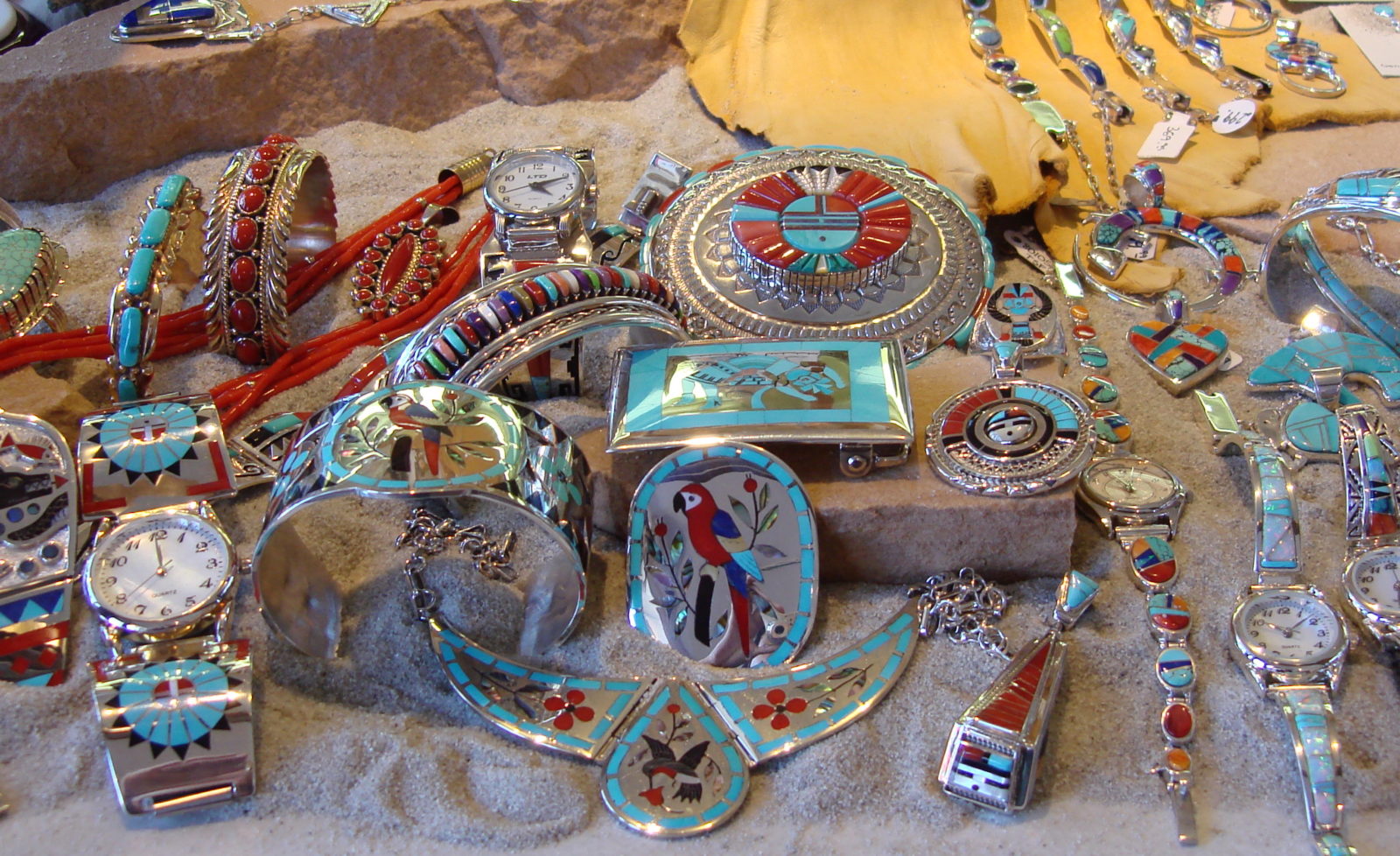Uncategorized
What is an inlay?
The Zuni Pueblo Indians began inlaying jewelry in the 1930s, followed by the Navajo in the 1960s. Inlaying consist of individually hand grinding stones to fit snugly against each other. Channel inlay is simliar, although the stones are set against a channel made of silver or gold, known as silver or gold channel inlay. Between these 2 types, the hardest is by far stone against stone. Stone inlaying requires a very good eye and great precision to fit each stone snugly against the next without leaving gaps between each unique stone. As each stone is ground it is glued in place using industrial adhesive. Although the silver channel inlay is not easy to craft either, laying the stones requires very closed contact. Started off using hand cranked grinding tools to shape their stones and shells, the indians job got easier with the auto matic grinders and polishing wheels giving them more options to work with. Todays tools allows them to use a wider variety of stones or shells that make their work even more eye catching and beautiful.
In the 1960s renowned artists like Richard Begay, Charles Loloma and Preston Monongye began working in inlay using a variety of stone, shell, ivory and even wood to create a multitude of colors. They were the first to work with 14K and 18K gold giving it a contemporary look although keeping their traditional flair. Since then the Navajo’s refined their techniques by with what is called “micro inlay”. This involves very small cuts of stone or shells to inlaid in a pattern, resulting in a design or picture when finished. These pieces can easily involve 300 or mores cuts to complete.
We hope this has given you a better understanding of Native American inlay jewelry.
If you have any other questions please message us.
Sincerly, Native Jewelry Gallery

